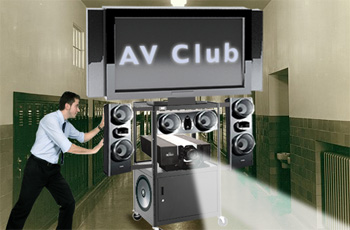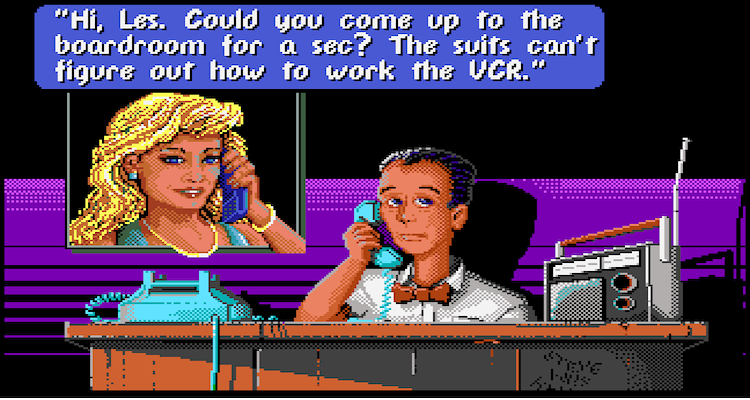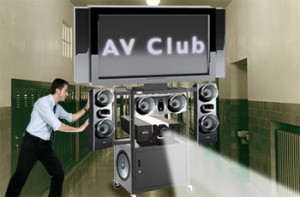What’s Next?
Just  try and find a June ProAV publication that doesn’t talk about Infocomm 2010. Not to mention actually being there (or lamenting the decision to not be) yourself! Whether a “newbie,” or seasoned attendee, if you’re seeking communication on products that communicate; Infocomm’s show provided no shortage of news to consume. And, for good reason — there is much to be aware of (too much?) in this ever-evolving industry, all of which leads to the AV Club to wonder — both excitedly and exasperatedly — what next?
try and find a June ProAV publication that doesn’t talk about Infocomm 2010. Not to mention actually being there (or lamenting the decision to not be) yourself! Whether a “newbie,” or seasoned attendee, if you’re seeking communication on products that communicate; Infocomm’s show provided no shortage of news to consume. And, for good reason — there is much to be aware of (too much?) in this ever-evolving industry, all of which leads to the AV Club to wonder — both excitedly and exasperatedly — what next?
Going out on a limb (just outside the AV Club house, mind you), it’s fair to say everyone reading this article has a great interest in AV technology. And, by the very nature of dealing with technology, we’re also tolerant, even expectant, of evolution and change. But as the old adage says, is it just “change for the sake of change” or real advancement with application to a specific need? Said another way, new technology is not necessarily analogous to good technology. Cool, maybe… but is it good?
Here are some summary observations of trends that appear to be on the move, as observed at Infocomm 2010. Take them for what they’re worth, especially if they compare reasonably with your own experience and what you feel is needed.
Pre-show press included plenty of expectation around 3D. While the consumer AV market continues to push 3D, the jury is out on what’s next for 3D in ProAV for the education market. Interesting enough (and not at all surprising) almost every 3D demo I saw seemed to use consumer market 3D content. Instead of 3D rotating molecules or a 3D CAD model fly-through there were 3D golfers, 3D concerts and 3D animated feature films. A person watching the golfing footage was overheard saying “… actually, it looks like layers of 2D, not really 3D.” Agreed. But, from a “cool” techie stand-point, it was an undoubtedly sharp image and could also have been described as giving a sense of actually being there on the back nine. Looking around at all the other “four eyes” watching, though, it’s also hard to image classroom after classroom of students donning 3D glasses, let alone technology managers supplying and maintaining them. Ultimately, it stands to reason what’s next is better niche 3D classroom setups; easier and more practical to fit-out in the near term thanks to the resurgence in development of this technology.
While not really 3D (and not requiring glasses), there were a couple variations on a pseudo holographic type display. Applications include videoconferencing and one (TelePresenceTech) fitted a virtual presenter “standing” at a physical podium. While seemingly still in the “if you have to ask how much, you can’t afford it” category, this is pretty cool and may evolve further. What’s next may approach affordability when compared to cost and logistics of getting VIPs cloned to be “live” in front of a distributed audience.
How about what’s next for GreenAV? As evidenced by being one of Infocomm’s largest and most active social networking SIG topics, it’s clear this industry has some momentum to make advancements in this area. This is good. There are at least two fronts AV can make a difference — reducing how much energy our gear sucks up and the even greater potential for providing technology that minimizes how much energy is consumed via less efficient communication alternatives (e.g., videoconferencing vs. travel or digital signage vs. print media). Thanks to strong leadership by a smaller subset of individuals, multiple efforts have been advanced ,especially diving into the ENERGY STAR program for application to ProAV and trying multiple approaches to get on the LEED credit system. Unfortunately, it seems the LEED folks didn’t see AV credits as a priority (which is a head scratcher). Undaunted, Infocomm has rolled out their own program, STEP (Sustainable Technology Environments PerformanceSM).
With control systems at the heart of ProAV, it’s no surprise to see many choices now being offered not only by the “big three” manufacturers but by upstarts and other manufacturers moving laterally into the control arena. This is good as it should help get a room touch panel control system at an even lower price point. I do have to wonder though, what’s next, when some of the biggest booth splashes seemed to be made in terms of highlighting giveaways and/or that “we have Apps…” for a computer manufacturer’s product (the iPad, by Apple). White flag?
And a nod to the consortia of manufacturers working on AVB (Audio Video Bridging network standard). There seems to be many flashing arrows pointing the industry to move all AV signals to the IP network. To do so means addressing myriad issues, many unique to ensuring high performing audio video and control. A good deal of thought to what’s required has gone into this; hopefully what’s next is more manufacturers jumping in and AVB based systems starting to get implemented.
In closing, a show like Infocomm (let alone having Las Vegas as a backdrop) is driven by trends and “buzz.” While this can become tiresome, you’d have to be a zombie to not get sucked in and appreciate all the innovation. However, in applications for education the AV Club tries to sort through what’s needed in the near term, what is just plain cool, and what’s next over the long haul.
 The views expressed in this column do not necessarily reflect the views of the authors’ employer(s), past or present.
The views expressed in this column do not necessarily reflect the views of the authors’ employer(s), past or present.
Greg Bronson, CTS-D, applies AV technologies in the development of innovative learning spaces for higher education. Greg spent the first 10 years of his career as AV technician and service manager, with the past 12+ years as an AV system designer and project manager. Bronson currently works for Cornell University and has also worked for two SUNY (State University of New York) campuses as well as a regional secondary education service depot. Bronson is the originator of concept for Infocomm’s Dashboard for Controls and has had completed projects featured in industry publications. You can reach Greg at gregthetechie@netscape.net





